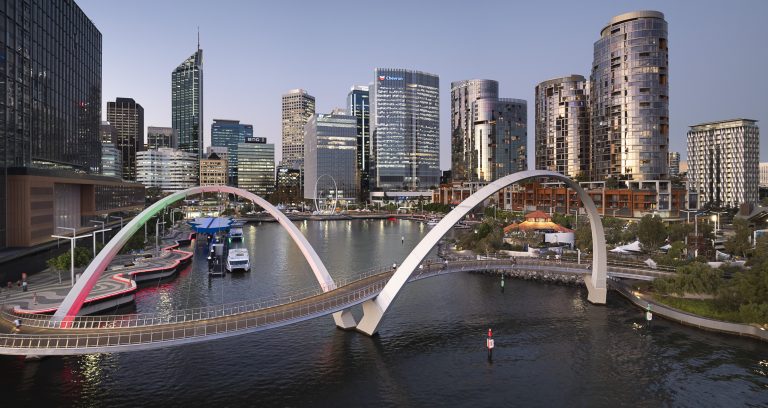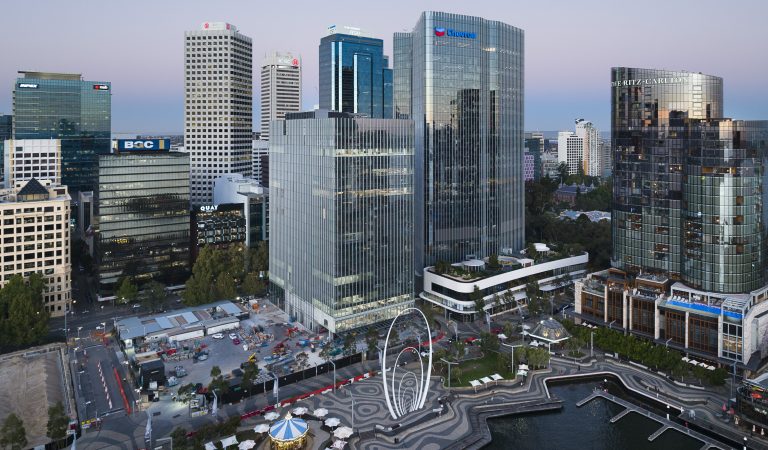15 Nov 2012
Designing cities

The idea of the big city is a romantic one. Weaving through the feet of skyscrapers, coffee in hand, as you make your way to work, or following the glittering skyline in the evening, the tallest tower marking your route like a modern Star of Bethlehem. However like most romantic notions, this is but an illusion – an illusion carefully crafted by a handful of creative visionaries, visionaries more commonly known as architects. For new developments in any city must contribute to the interconnectivity of its existing structures and ever-growing population, refreshing the urban landscape, all the while preserving its historical foundations. Currently under construction, 171 Collins represents Melbourne’s first premium grade office building in over 20 years and is a fine example of responsible urban development. Conceived and designed by award-winning architects Bates Smart, in association with developers Charter Hall Office REIT and Cbus Property, 171 Collins forges new links and strengthens old concepts, propelling Melbourne one step closer toward an international metropolis.
As well as housing industry, commercial buildings also has the potential to enhance the interconnectivity of their context. Indeed, it would be impossible for any large-scale urban development to achieve optimum functionality without somehow accounting for its surroundings, and many buildings are in fact tailored to bridge existing voids or contribute to the flow of pedestrian traffic. In the case of 171 Collins, its immense glass form unites the two previously separate worlds of glitzy Collins Street and gritty Flinders Lane. Further, the transparency of the glass affords visibility of the pre-existing warehouse buildings that adjoin 171 Collins, simultaneously connecting old and new. “On one side it’s interconnected because you see the context more readily” says Kristen Whittle, Director of Bates Smart. “But there’s also this interesting dialogue where the appearance of the building almost bounces off of the adjoining context like an echo.”
For many architects, one of the greatest challenge is creating beautiful buildings that both respect and complement their surrounds. While Melbourne is renowned for its heritage architecture and rich character, it is also rapidly evolving. Bates Smart, responsible for Melbourne icons such as Federation Square and Crown Metropolitan Hotel, understands the importance of history and context, and therefore always factor the surroundings into the building plan. “171 Collins had a specific duty,” Whittle explains. “It sits right behind St Paul’s Cathedral on the river, amongst the big iconic shots of Melbourne. Compositionally speaking, it had to speak to its context directly.” And it does, thanks to vertical ribbons of glass that undulate up and down the side, creating a counterpoint to the monolithic carved stone appearance of the cathedral.
In addition, 171 Collins pays tribute to Melbourne’s history through the bridging of Collins Street and Flinders Lane, once again through the clever use of glass to create a warehouse-like thoroughfare between the two streets. “It’s about the growth of the city,” says Whittle, adding, 171 Collins extends its language and its persona to deal with its adjacencies. Instead of using stone and brick and a basic masonry language, we used almost the same shapes but made them all out of glass. The structure is almost like a mould mimicking the adjoining buildings.” Through the accommodation of these techniques, Bates Smart has succeeded in honouring the city’s historical aspects in lieu of this new progression.
Any city will inevitably develop and expand as time passes, and alongside the preservation of history, it is integral that new architecture breathes life into the urban landscape. Multi-faceted commercial buildings like 171 Collins achieve this rejuvenation. With a site more complex than most, Bates Smart was forced to get creative. The heritage listed Mayfair Building, or the Metro Theatre, forms the face of the project. To revitalise the front, Bates Smart created an elegant lighting system; to replenish the interior, an atrium was introduced. “The atrium really defines the gap between the old Mayfair Building and the new tower building,” says Whittle. “You will immediately see these undulating ribbons of glass that will break out of the glass ceiling and ride up in front of you 18-storeys high. It will be a very dramatic space.”This drama is not merely architectural trickery, but also a polite nod to the building’s original function as a theatre., further enhanced by the detailed glass screen built along the surfaces of the atrium. “This forms a uniting gesture to the space. That’s a nod or a reference to the couture tailoring of Collins Street and also the history of the theatre and the idea of the curtain opening,” says Whittle, of this clever acknowledgement of the past that manages to push into the new, offering Melbourne dwellers a much-needed novelty.
It seems this juggling act of architecture is never-ending. However, it is the success of such complexity that enables a city to not only function but also progress, with 171 Collins a pinnacle of this possibility. For 171 Collins establishes strong networks with its surroundings, respects Melbourne’s heritage whilst reinterpreting it, and offers a striking visual edifice that will no doubt top the list of Melbourne’s most beloved icons, feeding life into the big city and instilling a sense of hope in the hopeless romantic.


